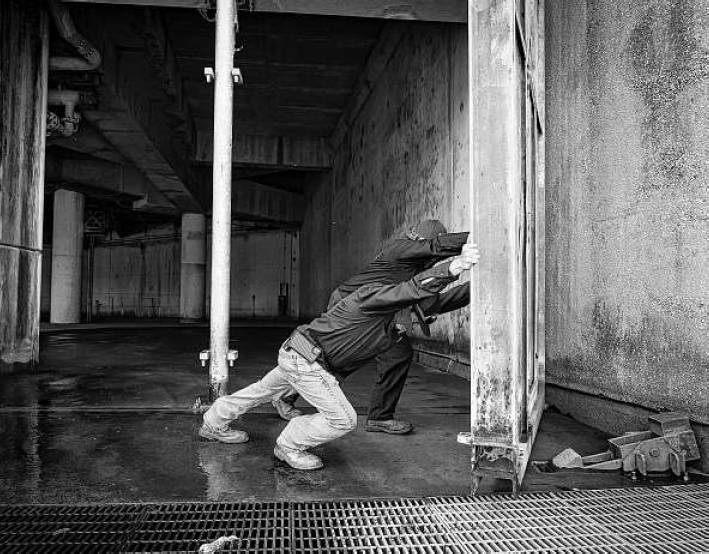EDITORIAL
Can Houston tunnel out of flooding?
The ideas for routing floodwaters have merit, but they provoke many questions, too.
Thirty years ago on Ash Wednesday, a storm dumped 10 inches of rain on Houston in just six hours, causing widespread flooding. The deluge brought Addicks and Barker Reservoirs, the earthen dams built by the Army Corps of Engineers in the 1940s to protect downtown Houston, to the brink of a catastrophic breach that would have inundated thousands of homes.
Scared straight by this freak disaster, the Army Corps of Engineers commissioned a study of potential solutions to the region’s flooding problem. The 1996 study also highlighted a “unique, once-in-a-lifetime opportunity” to build a tunnel — a 12-mile conduit beneath the Katy Freeway that would carry water out of the reservoirs to a discharge point near downtown Houston. A tunnel would have alleviated the inadequate drainage tributaries in the Buffalo Bayou watershed. According to Corps projections, it also would have protected, at the time, thousands of homes and potentially saved hundreds of millions of dollars in future flood damage, at an eye-popping cost of $325-$400 million.
Anyone who lived through Hurricane Harvey knows how this story ended.
City and county leaders punted on the tunnel, in part due to concerns about whether the technology even existed to safely tunnel through Houston’s soft, spongy terrain. Yet storms continued to produce historically large reservoir pools again through the 1990s and 2000s. When Harvey blew through town four years ago, 10,000 to 12,000 properties in nearby suburban subdivisions flooded.
Fixing these dams remains a vital goal of the region’s flood control strategy. It seems that technological advances in tunnel boring, combined with the desperation for solutions, have finally caught up to the ambition laid out in that original decades-old study.
The Corps and Harris County Flood Control District are each studying the feasibility of underground tunnels to funnel storm water downstream. The Corps envisions a tunnel 150 feet below the ground, starting at the reservoirs and discharging in the Houston Ship Channel. The flood control district’s ongoing study is far more comprehensive, one of the most ambitious projects the agency has ever conceived: a system of massive tunnels serving potentially many different watersheds — there are 22 in Harris County alone — that would use gravity to funnel storm water beneath the region’s bayou network to the Ship Channel or Galveston Bay. Cost estimates range from $3-12 billion depending where it is built.
Scott Elmer, assistant director of operations for the flood control district, told the editorial board that the next step is figuring out which parts of the county would benefit most from such a project. The district hopes to release its study next month.
One advantage of a tunnel is that it can be far less intrusive than other flood control methods. Tunnels can cross watersheds without adversely affecting other parts of the city and in theory prevent tributaries such as Buffalo Bayou or Brays Bayou from flooding. .
But there are many potential drawbacks as well. Right now, it’s incumbent on the Corps and flood control district to finish their studies and answer several fundamental questions:
Will flood tunnel proposals factor in equity? For too long, the northeast section of Harris County has suffered disproportionately from flooding, with no major federal project on the horizon to address it. The Corps tunnel concept, for instance, would primarily benefit upper middle class and affluent homeowners. It’s crucial that a flood tunnel not alleviate flooding in one part of the county while ignoring other flood-prone neighborhoods.
What will the environmental impacts be? Any outfall from the tunnel would likely eventually make its way to Galveston Bay, an ecological and economically vital jewel. Any tunnel project must ensure that it won’t be dumping tons of contaminated water and toxic sediment into public waters.
Will it avoid private property? Even though a tunnel would be built underground, there are a number of potential obstacles that could arise if it’s not aligned with public rights of way. To keep the costs down and win political support, the public must have confidence it won’t become a construction nuisance or an excuse for a massive land seizure through eminent domain.
As we await answers, it’s important not to view this project, or any large-scale infrastructure project,as a magic bullet to solve flooding. Houston’s fundamental problem is geography: we live in a pancake-flat region where Mother Nature regularly dumps huge amounts of rain in very short periods of time. No flood barrier or tunnel will change that, but it can certainly help mitigate the aftermath. It’s critical that a tunnel project doesn’t lull policymakers into a state of complacency where we revert to the poor planning habits of yore — such as developing even more residential housing on floodplains. A tunnel may indeed be an effective defense against the destruction we saw after Harvey, but it’s not the only one.
